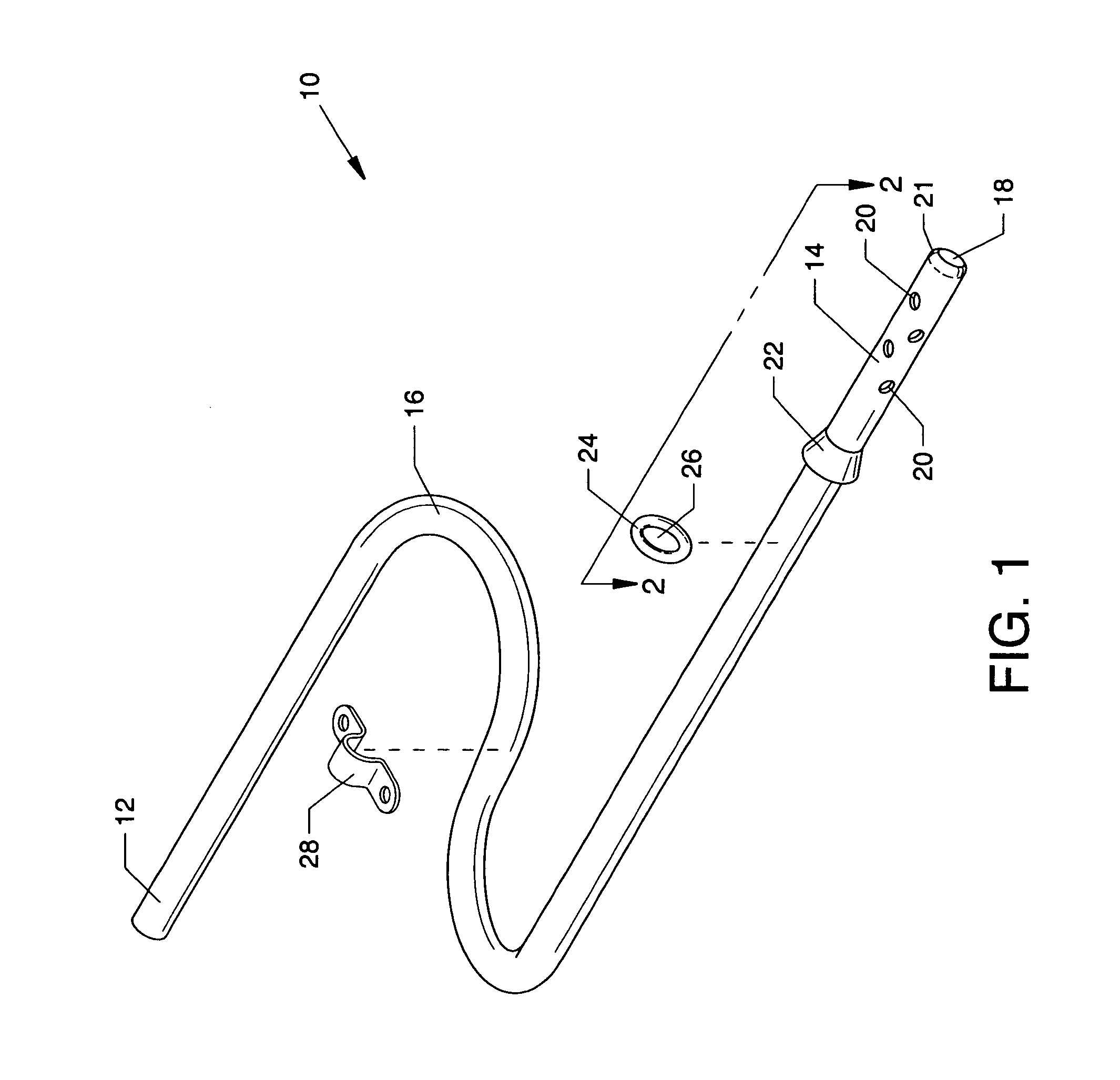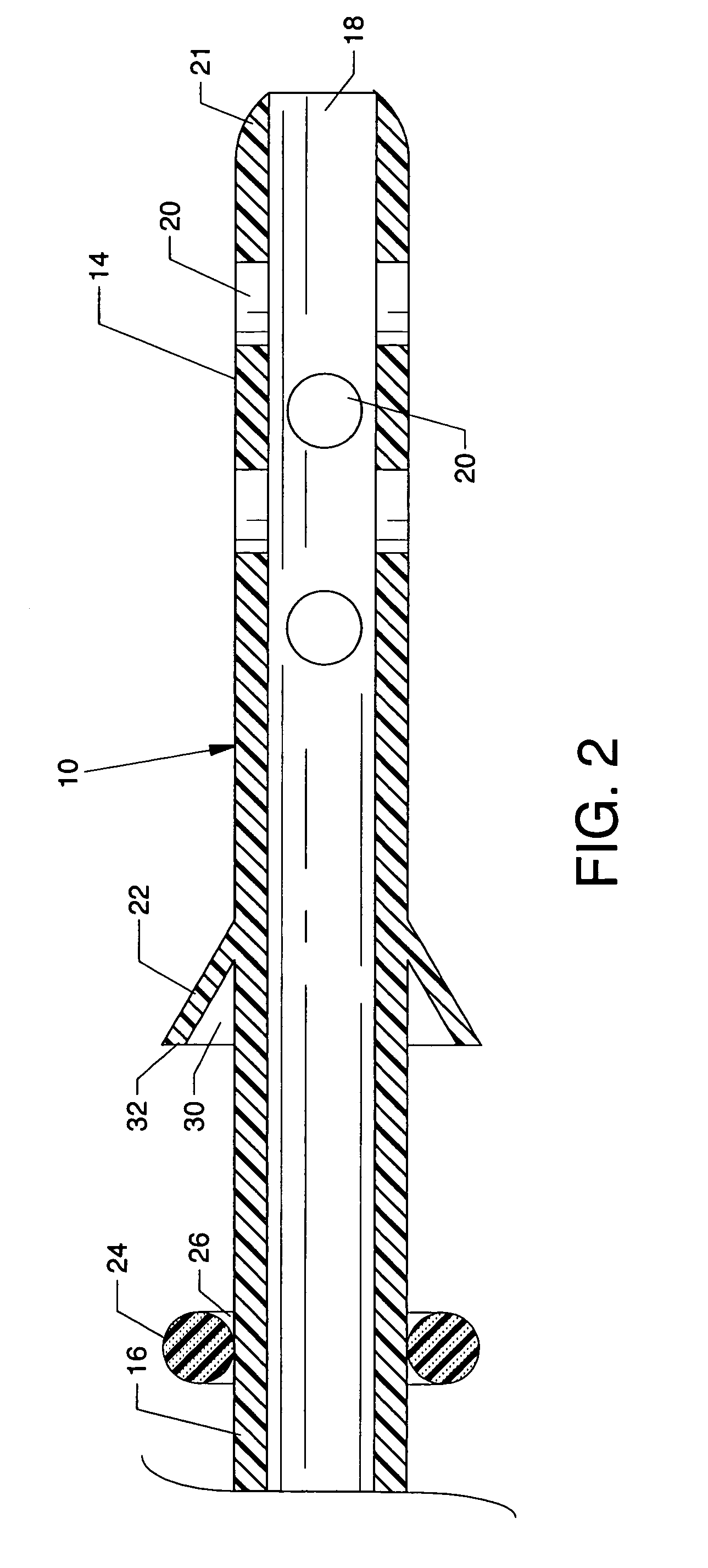Process for treating glaucoma
- Summary
- Abstract
- Description
- Claims
- Application Information
AI Technical Summary
Benefits of technology
Problems solved by technology
Method used
Image
Examples
Embodiment Construction
[0034]FIG. 1 is an isometric view of a shunt 10 and associated components thereof which are used to equalize the translaminar pressure difference between the intraocular space and the intracranial space of the eye. Preferably, the shunt 10 is flexible and fashioned of silicone or other suitable material. The flexible shunt 10 includes a proximal end 12, a distal end 14 and a midsection 16 extending generally between the proximal end 12 and the distal end 14. The flexible shunt 10 can be of a nonrestricted shape devoid of a memory shape or can have a memory shape (not shown) generally conforming to the shape of the human eye. A lumen 18 extends internally along the length of the shunt 10 between the proximal end 12 and the distal end 14 of the shunt 10. A plurality of like holes 20 communicating with the lumen 18 is distributed along, about, and through the wall of the distal end 14. Preferably, the tip 21 at the distal end 14 of the shunt 10 is rounded in order to prevent trauma and...
PUM
 Login to View More
Login to View More Abstract
Description
Claims
Application Information
 Login to View More
Login to View More - R&D
- Intellectual Property
- Life Sciences
- Materials
- Tech Scout
- Unparalleled Data Quality
- Higher Quality Content
- 60% Fewer Hallucinations
Browse by: Latest US Patents, China's latest patents, Technical Efficacy Thesaurus, Application Domain, Technology Topic, Popular Technical Reports.
© 2025 PatSnap. All rights reserved.Legal|Privacy policy|Modern Slavery Act Transparency Statement|Sitemap|About US| Contact US: help@patsnap.com



